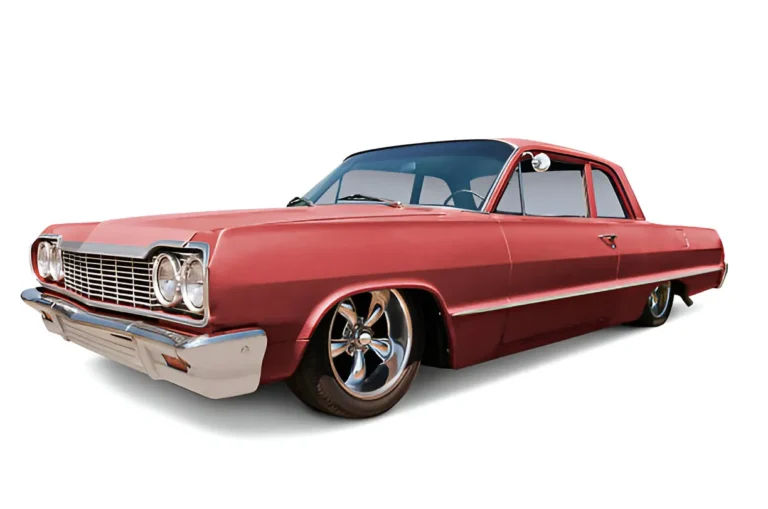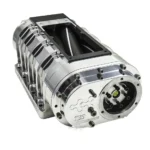Our topic for today will be “the 1964 Hotchkiss Style Axle on the 64 Impala”.
When you think of classic American cars, the 1964 Chevrolet Impala probably pops into your mind. This iconic vehicle didn’t just look good; it was built with some serious engineering prowess, including the Hotchkiss drive axle system. But what exactly is this Hotchkiss style axle, and why was it so important? Buckle up because we’re about to take a deep dive into the mechanics and legacy of the 1964 Impala’s Hotchkiss drive axle.
The 1964 Chevrolet Impala
The 1964 Chevrolet Impala wasn’t just another car; it was a cultural phenomenon. Born in an era when muscle cars were all the rage, the Impala quickly became a favorite among car enthusiasts and average drivers alike. Its sleek design, powerful engine options, and advanced engineering made it stand out. The development of the 1964 model brought several improvements over its predecessors, making it one of the most sought-after classic cars today.
The Impala’s popularity was cemented in American culture through movies, TV shows, and music, symbolizing freedom and the open road. It wasn’t just about getting from point A to point B; it was about the journey, the experience, and the ride itself.
What is a Hotchkiss Drive Axle?
So, what exactly is a Hotchkiss drive axle? In simple terms, it’s a type of rear axle assembly where the axle is directly connected to the leaf springs, which serve a dual purpose. They not only support the weight of the car but also help in absorbing shocks from the road and managing the torque generated by the engine. Unlike some other axle systems that use complex linkages, the Hotchkiss drive is straightforward, making it both durable and easy to maintain.
This axle system gets its name from Albert Hotchkiss, an inventor who patented this design. Over time, the Hotchkiss drive became a standard in many vehicles due to its effectiveness and reliability.
Components of the Hotchkiss Drive Axle
Leaf Springs
The leaf springs are the backbone of the Hotchkiss drive axle. These are long, flat pieces of steel that are layered together to form a spring. The primary function of these springs is to absorb shocks from the road, ensuring a smooth ride. In the 1964 Impala, the leaf springs also play a crucial role in maintaining the alignment of the rear axle, which is vital for the vehicle’s handling and stability.
Solid Rear Axle
The solid rear axle is a single piece of metal that connects the two rear wheels. This design is incredibly robust, making it perfect for the high-performance demands of muscle cars like the Impala. The solid axle helps in evenly distributing the torque from the engine to both rear wheels, providing better traction and stability, especially during acceleration.
U-Bolts and Shackles
U-bolts and shackles are essential components that hold the leaf springs in place. The U-bolts wrap around the axle and secure it to the leaf springs, while the shackles connect the springs to the vehicle’s frame. These components must be in good condition to ensure the entire axle assembly functions correctly.
Functionality of the Hotchkiss Drive Axle
One of the standout features of the Hotchkiss drive axle is its ability to manage torque efficiently. Torque is the force that causes the car to move, and how this force is handled can significantly affect the vehicle’s performance. The Hotchkiss drive system ensures that the torque is evenly distributed to the rear wheels, reducing the chances of wheel spin and improving overall traction.
Moreover, the integration of the leaf springs with the axle helps in maintaining vehicle stability. When you hit a bump or take a sharp turn, the springs absorb the shocks, keeping the car steady and preventing excessive swaying.
Advantages of the Hotchkiss Drive Axle
Why was the Hotchkiss drive axle so popular? There are several reasons:
- Durability and Robustness: The simple yet sturdy design of the Hotchkiss drive axle makes it incredibly durable. It can withstand the rigors of daily driving and the high-performance demands of muscle cars.
- Cost-Effectiveness: Due to its straightforward design, the Hotchkiss drive axle is relatively inexpensive to produce and maintain. This made it a popular choice for many car manufacturers.
- Performance Benefits: The efficient torque management and enhanced stability offered by the Hotchkiss drive axle translated into better performance on the road. Drivers could enjoy a smoother, more controlled ride.
Maintenance and Upkeep
Owning a classic car like the 1964 Impala comes with its own set of responsibilities. Proper maintenance of the Hotchkiss drive axle is crucial to ensure the car runs smoothly.
Common issues you might encounter include worn-out leaf springs, loose U-bolts, and rusty shackles. Regular inspection and timely replacement of these components can keep your axle system in top shape. It’s also essential to lubricate the moving parts to prevent wear and tear.
Restoration Tips for Classic Car Enthusiasts
Restoring a 1964 Impala to its former glory can be a rewarding experience. When it comes to the Hotchkiss drive axle, here are a few tips:
- Finding Original Parts: Look for authentic parts to maintain the car’s originality. This might involve scouring junkyards, attending car shows, or joining classic car clubs.
- Modern Upgrades and Compatibility: While it’s essential to preserve Authenticity, some modern upgrades can enhance performance without compromising the car’s classic appeal. Ensure any upgrades are compatible with the existing system.
- Preserving Authenticity: When restoring, aim to keep as many original components as possible. This not only maintains the car’s value but also keeps its historical significance intact.
Hotchkiss Drive Axle in Modern Vehicles
The principles of the Hotchkiss drive axle are still relevant today, though modern vehicles often use more advanced systems. Independent rear suspensions, for example, offer better handling and ride comfort but are more complex and expensive.
However, the Hotchkiss drive’s simplicity and effectiveness have influenced many contemporary designs. The balance between cost, durability, and performance remains a critical consideration in automotive engineering.
How to Remove Axles on a 1964 Impala
If you’re working on a 1964 Chevrolet Impala and need to remove the rear axles, you’re likely dealing with a Hotchkiss-style rear end. This setup, characterized by bolt-in axles, was standard for the 1964 Impala. However, many of these 8.2″ ring-geared rear ends were prone to failure under heavy stress, leading many owners to replace them with more robust alternatives over the years.
Identifying Your Rear End
Before diving into the removal process, it’s crucial to identify the type of rear-end your Impala has:
- Hotchkiss Style Rear End: If your Impala still has the original rear end, it will be a Hotchkiss style. You can identify it by the bolts on the front of the differential, which secure the “pumpkin” (differential carrier) to the rear end. The axles are secured to the rear end by four bolts.
- Salisbury Style Rear End: If your rear end has been replaced, you might find a Salisbury-style rear end. This type wasn’t introduced until 1965, so it’s not original to the 1964 model. The Salisbury style features an inspection plate bolted on the back of the rear end. Count the bolts to determine if it’s a 12-bolt model (two bolts on the bottom of the cover are a giveaway).
Common Replacements
Over time, many owners replaced the original 8.2″ Hotchkiss rear end with various other options, including:
- 8.2″ Ten Bolt
- 8.5″ Corporate Ten Bolt
- 8.785″ Twelve Bolt
- Ford 9-Inch Hotchkiss Style
These replacements offer better durability and performance compared to the original setup.
Removing the Axles
Tools and Materials Needed
- Jack and Jack stands
- Socket set and wrenches
- Screwdrivers
- Hammer and punch
- Pliers
- Drain pan
Step-by-Step Removal Process
- Raise the Vehicle: Use a jack to lift the rear of the Impala and secure it on jack stands. Ensure the car is stable before crawling underneath.
- Drain the Differential Fluid: Place a drain pan underneath the differential and remove the drain plug (if equipped) or loosen the differential cover bolts to allow the fluid to drain.
- Remove the Differential Cover (Salisbury Style): If your rear end has an inspection plate, remove the bolts securing it to access the differential.
- Remove the Axle Retaining Bolts (Hotchkiss Style): If you have a Hotchkiss rear end, locate the four bolts that secure each axle to the rear end. These bolts are typically located near the brake backing plates.
- Access the C-Clips (Salisbury Style): For Salisbury style rear ends, you need to remove the differential pinion shaft bolt and slide out the shaft. Push the axles inward to access and remove the C-clips.
- Pull Out the Axles: With the retaining bolts or C-clips removed, carefully slide the axles out of the housing. You might need to use a slide hammer if the axles are stuck.
- Inspect the Components: Take this opportunity to inspect the bearings, seals, and axle shafts for any signs of wear or damage. Replace any components as necessary.
- Reassemble: If you’re replacing components or upgrading the rear end, follow the reverse steps to reassemble. Ensure all bolts are torqued to the manufacturer’s specifications.
Upgrading Your Rear End
For those looking to upgrade their Impala’s rear end, consider sourcing an Oldsmobile or Pontiac rear end, as these are stronger than the stock Chevy rear. Additionally, the 1965-1972 Dana-Spicer Salisbury rear ends, used by GM, offer enhanced durability and are a popular choice for classic car restorations.
Removing the axles on a 1964 Impala requires careful identification of your rear end type and following a systematic process. Whether you’re maintaining the original Hotchkiss style or upgrading to a more robust rear end, understanding the nuances of your axle system is crucial. By following these steps, you can ensure a smooth and successful axle removal, paving the way for any repairs, upgrades, or restorations you have planned.
Conclusion
The 1964 Hotchkiss style axle of the impala is a testament to the ingenuity of mid-20th-century automotive engineering. Its straightforward yet effective design contributed significantly to the car’s performance and legacy. For classic car enthusiasts and owners, understanding and maintaining this system is key to preserving the vehicle’s Authenticity and enjoying its timeless charm.
So, whether you’re cruising down the highway or showcasing your Impala at a car show, the Hotchkiss drive axle will continue to play a pivotal role in your driving experience.







